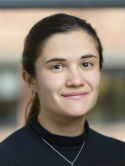Clonal decomposition and DNA replication states defined by scaled single-cell genome sequencing Journal Article
| Authors: | Laks, E.; McPherson, A.; Zahn, H.; Lai, D.; Steif, A.; Brimhall, J.; Biele, J.; Wang, B.; Masud, T.; Ting, J.; Grewal, D.; Nielsen, C.; Leung, S.; Bojilova, V.; Smith, M.; Golovko, O.; Poon, S.; Eirew, P.; Kabeer, F.; Ruiz de Algara, T.; Lee, S. R.; Taghiyar, M. J.; Huebner, C.; Ngo, J.; Chan, T.; Vatrt-Watts, S.; Walters, P.; Abrar, N.; Chan, S.; Wiens, M.; Martin, L.; Scott, R. W.; Underhill, T. M.; Chavez, E.; Steidl, C.; Da Costa, D.; Ma, Y.; Coope, R. J. N.; Corbett, R.; Pleasance, S.; Moore, R.; Mungall, A. J.; Mar, C.; Cafferty, F.; Gelmon, K.; Chia, S.; The CRUK IMAXT Grand Challenge Team; Marra, M. A.; Hansen, C.; Shah, S. P.; Aparicio, S. |
| Article Title: | Clonal decomposition and DNA replication states defined by scaled single-cell genome sequencing |
| Abstract: | A high-throughput method for amplication-free single-cell whole-genome sequencing can be scaled up to analyze tens of thousands of cells from different tissues and clinical sample types and identifies replication states, aneuploidies, and subclonal mutations. © 2019 The Authors Accurate measurement of clonal genotypes, mutational processes, and replication states from individual tumor-cell genomes will facilitate improved understanding of tumor evolution. We have developed DLP+, a scalable single-cell whole-genome sequencing platform implemented using commodity instruments, image-based object recognition, and open source computational methods. Using DLP+, we have generated a resource of 51,926 single-cell genomes and matched cell images from diverse cell types including cell lines, xenografts, and diagnostic samples with limited material. From this resource we have defined variation in mitotic mis-segregation rates across tissue types and genotypes. Analysis of matched genomic and image measurements revealed correlations between cellular morphology and genome ploidy states. Aggregation of cells sharing copy number profiles allowed for calculation of single-nucleotide resolution clonal genotypes and inference of clonal phylogenies and avoided the limitations of bulk deconvolution. Finally, joint analysis over the above features defined clone-specific chromosomal aneuploidy in polyclonal populations. © 2019 The Authors |
| Keywords: | controlled study; human tissue; human cell; nonhuman; dna replication; mouse; animal tissue; cell cycle; cell structure; animal experiment; animal model; genotype; tumor xenograft; dna; genomic instability; genome; cell aggregation; gene dosage; aneuploidy; mathematical computing; phylogeny; cancer genomics; genetic correlation; clone; single cell analysis; tumor heterogeneity; copy number; single cell; decomposition; dna sequencing; human; female; priority journal; article; whole genome sequencing; tumor evolution; cells by body anatomy |
| Journal Title: | Cell |
| Volume: | 179 |
| Issue: | 5 |
| ISSN: | 0092-8674 |
| Publisher: | Cell Press |
| Date Published: | 2019-11-14 |
| Start Page: | 1207 |
| End Page: | 1221.e22 |
| Language: | English |
| DOI: | 10.1016/j.cell.2019.10.026 |
| PUBMED: | 31730858 |
| PROVIDER: | scopus |
| PMCID: | PMC6912164 |
| DOI/URL: | |
| Notes: | Andrew Spencer Vatrt-Watts's middle name is listed as the first name on the original publication -- Source: Scopus |
Altmetric
Citation Impact
BMJ Impact Analytics
Related MSK Work









